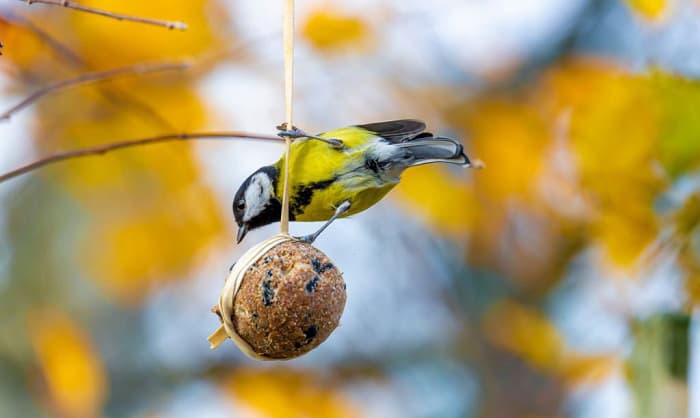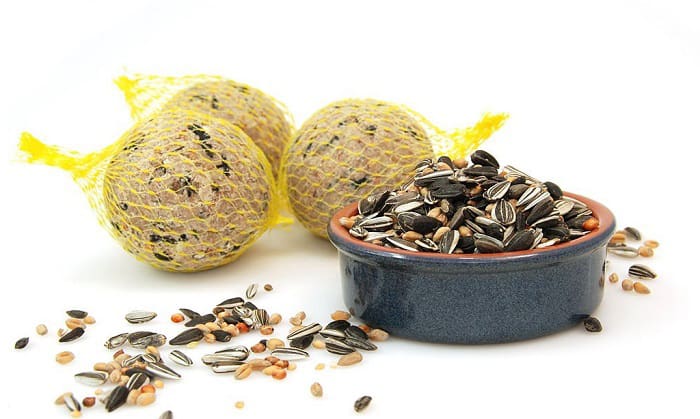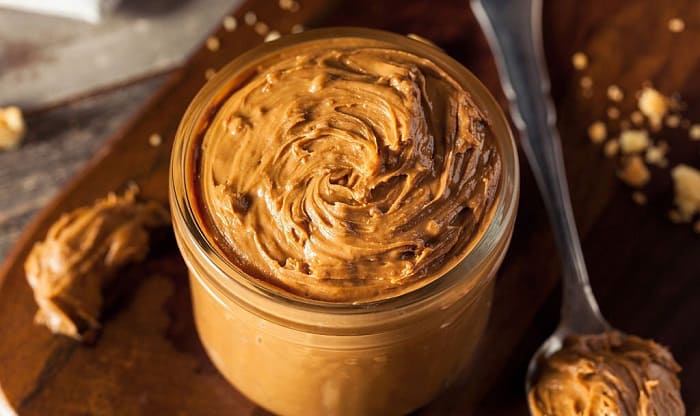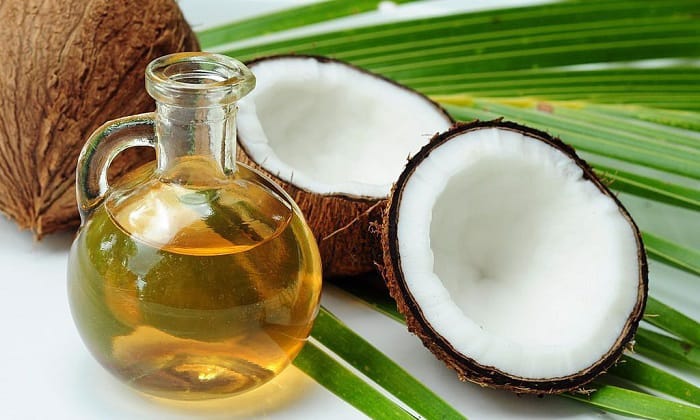During the winter, birds need fat as a major energy source. Fat keeps birds warm during the winter and will allow them to migrate and look for food.
During winter nights, birds get their energy from their stored fat, and they will lose about 75% of this supply overnight. Thus, they need to replenish their fat stores daily.
If you want to help birds during winter, you can provide them with fat-rich food in your own backyard. There are plenty of commercial fat balls you can buy online and from bird stores, but it is cheaper to make DIY bird seed balls. If you want to learn how to make bird seed balls without lard, take a look at these simple recipes below.
Table of Contents
Ways to Make Bird Seed Balls Without Lard
Lard is animal fat that is extracted from pork. It is a popular fatty ingredient for making seed balls for birds but for this article, we will give you bird seed balls recipes using alternative ingredients other than lard.
Method #1: Making Seed Balls Using Suet
Ingredients
- Suet from beef or ready-made suet or vegetable suet
- 2 cups bird seeds ((sunflower seeds, Nyjer seeds, safflower seeds )
- Bowl
- Mixing spoon
- Twine or rope
- Saucepan
- Tip: the ratio of suet to the bird seeds should be 1:2. Use this formula to increase the volume of the mixture depending on the number of seed balls you want to make.
Suet is cow fat specifically located around a cow’s loins and kidneys. If you do not want to work with lard, this is a good alternative when you want to make fat balls for birds. You can also use vegetable suet if you prefer vegan. This is how to make bird seed balls using homemade suet without lard:
Steps
- Step 1: Melt the suet in a saucepan using low heat.
- Step 2: Once it turns into liquid and has thickened, remove the pan from the fire.
- Step 3: Add the bird seeds to the suet and mix thoroughly.
- Step 4: Place the mixture in a bowl and refrigerate until it hardens into a dough-like consistency.
- Step 5: Shape the mixture into medium-sized balls.
- Step 6: Place the balls in the fridge again until the shape has been set to avoid crumbling.
- Step 7: Place a twine around each ball and hang them in your garden.
Method #2: Making Seed Balls With Peanut Butter
For this recipe, we will use 2 kinds of fat for these homemade bird food balls: suet and peanut butter.
Ingredients
- 1 ½ cup suet
- 1 cup peanut butter
- 2 cups bird seeds (sunflower seeds, Nyjer seeds, safflower seeds)
- 1 cup cornmeal
- 1 cup rolled oats
- Microwave/saucepan
- Plates
- Mixing spoon
Steps
- Step 1: Heat the bowl in the microwave for 20 seconds on low heat, or as an alternative, you can warm the suet first in a saucepan.
- Step 2: Mix the suet and the peanut butter in the pre-heated bowl.
- Step 3: Add the dry ingredients (bird seeds, cornmeal, and rolled oats) to the mixture and stir with a spoon or spatula until they are thoroughly combined.
- Step 4: Place the mixture inside the refrigerator for an hour or so until it is firm enough to be shaped into balls.
- Step 5: Make suet balls for birds by forming them with your bare hands.
- Step 6: After you shape the balls, you can add more seeds as a coating by rolling them in a pan of bird seeds.
- Step 7: Refrigerate the formed seed balls again to solidify the peanut butter.
- Step 8: Once they are ready, you can put them outside your window or in your bird feeder.
Method #3: Making Seed Balls Using Coconut Oil
Coconut oil is a good source of fatty acids, which are the building blocks of fat which birds need in their diet. Adding this as a supplement in their diet will be beneficial to their health. Below is a fat balls recipe for that you can make with coconut oil:
Ingredients
- 2 cups bird seeds
- 4 tablespoons coconut oil
- 1 tablespoon peanut butter
- 1 cup of flour
- 1 packet unflavored gelatin (optional)
- A saucepan
- Plates
- Water
- A bowl
- A molder
- Mixing spoon
Steps
- Step 1: Place the coconut oil in a saucepan over low heat until it melts.
- Step 2: Combine the bird seeds and the flour in a bowl.
- Step 3: Add the liquified coconut oil and the peanut butter. You can add the gelatin to this mix if you choose to make it with it, preferably unflavored gelatin.
Here’s how you can prepare the gelatin
- Sprinkle 1 packet of gelatin in a bowl with 2 tablespoons of cold water.
- Let it stand for a minute and then add 1/3 cup of boiling water and stir until the gelatin is dissolved.
- Step 1: Mix thoroughly until the mixture becomes sticky. Add coconut oil as needed.
- Step 2: Shape them into balls or put them in a molder.
- Step 3: Place the balls in the freezer and remove them once they have set.
- Step 4: You can store unused balls in the freezer until ready to use them.
Additional Tips
- Add a sweetener to the mix, such as natural honey or a teaspoon of sugar to the mixture to make the treats yummier. You can add raisins or dried fruits as a birdseed alternative as well.
- If you don’t want to suspend the balls using a twine, you can make a fat ball holder for birds or get a suet cage from your local pet store.
- Do not hang the balls in areas with direct sunlight because the heat will melt the formed mixture, especially if you live in a warm climate. Bird seed balls are ideal for winter.
- Always check your seed balls and replace them when they become moldy.
- Store unused seed balls in a sealed bag in the freezer.
Is there a reason lard is commonly used for fat balls?
Lard is high in saturated and unsaturated fats and can provide birds with the energy they need for flying and foraging.
Animal fat such as lard is safe for birds to consume and is a welcome addition to their plant-based diet since they have a high metabolic rate which means they burn energy faster. The surest way for them to replenish energy stores is by fat consumption.
What Foods Should You Not Add to Your Birdseed Balls?
Here are some ingredients that are toxic to birds and should never be added to your bird seed balls:
- Chocolate
- Salt
- Artificial sweeteners such as Xylitol
- Caffeine
- Apple seeds
- Onions and garlic
- Margarine
- Bacon fat
- Avocado
Frequently Asked Questions
How do you get bird seeds to stick together?
Here are some ways to make bird seed stick together:
- If your mixture is not firm enough for bird seeds to hold together, you can harden it by putting it in the freezer for 12-24 hours or so until the balls are formed. This will hold out even if you make this recipe without gelatin.
- You can do your recipes with gelatin as an additional binding agent. See the last recipe above instructions on how to add gelatin to the mix. The disadvantage of using gelatin is that it melts easily, especially in a hot climate or during summer.
Can you use butter instead of lard for bird feeders?
Butter is not an ideal substitute for lard. It can be a good energy source, but too much butter is bad for birds.
Butter contains very high amounts of saturated fats compared to lard and thus poses a health risk to birds. This can cause obesity and heart problems in birds. Use unsalted butter or instead use suet. Substitute lard with this rendered fat from cows or vegetable suet if you prefer vegan suet for your DIY bird seed balls.
Conclusion
There are a lot of homemade recipes for birdseed balls that you can easily make on your own. Fat is an essential ingredient of seed balls because this will help our avian friends, especially during winter when they need energy and seeds are scarce.
The three recipes above gave you an idea on how to make bird seed balls without lard. You can tweak these recipes and add other ingredients, such as birdseed alternatives, to make your own personalized birdseed balls that birds will surely love.

George and I became friends after a birdwatching trip with our new group. And we have been enjoying every adventure together. When he told me the idea of establishing a site that shares our experiences and fun, I immediately agreed. After trials and errors, here we have Thayerbirding.

















